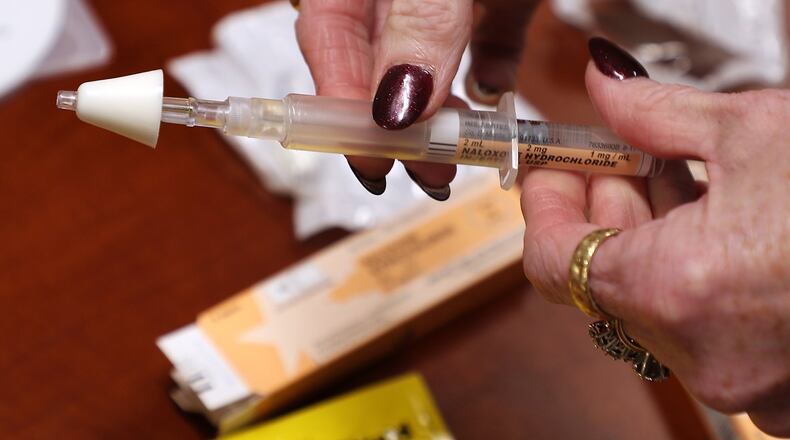The Marietta Police Department announced Tuesday a new intervention program to combat opioid addiction as the number of deaths in Cobb County from accidental overdoses appears to be decreasing.
The new program will create an alert system to notify the police when someone is revived using naloxone, a nasal spray that can reverse the effects of an opioid overdose.
After receiving the alert, two plain clothes police officers will conduct a “non-judicial visit” to the survivor and try to convince them to seek treatment. To that end, officers will receive sensitivity training on how to approach someone suffering from substance abuse disorder from The Davis Direction Foundation, a local nonprofit group dedicated to supporting recovery.
Marietta Police Chief Dan Flynn said the program came about as a result of the success the department and its partners have had using naloxone to save lives. Between the police department, the city’s fire department and the Metro Ambulance Service, naloxone was administered 100 times in the city of Marietta last year.
The next step, Flynn said, was figuring out how best to engage people and break the cycle of addiction.
“It’s got to be shortly after a near death experience with an overdose,” he said. “Do we think we’re going to get some doors slammed in our face by people saying ‘You don’t have a warrant, get lost?’ Yeah. But some people will say, ‘I want to hear more.’”
Flynn said the success of the program will be judged by how many people they can convince to voluntarily enter treatment, adding that he plans to evaluate the program at the six-month and one-year mark to find out, “Does it just feel good, or is it working.”
The program, which the department is calling the ASSIST Team, includes the fire department, ambulance service and Davis Direction, and will be led by Lt. Michael Goins, who was assigned to the Cobb County joint task force on narcotics until Marietta withdrew last month to focus on prevention and intervention efforts.
In a statement, Marietta police said the city’s most effective strategy has been to equip and train police officers, firefighters and emergency medical responders with naloxone, noting a decrease in the number of overdose deaths last year.
“While one death is one too many, we are encouraged by the overall results of our use of Narcan,” it added, using one of the brand names for naloxone.
While it’s impossible to measure to overall impact of naloxone on the total number of opioid deaths in the county, Cobb’s Deputy Chief Medical Examiner Cassie Boggs said preliminary data shows the number of accidental overdose deaths decreased from about 140 in 2017 to about 110 in 2018.
She noted that while the number of deaths from illegal substances such as heroin and fentanyl went down only slightly, there appears to be a significant drop in the number of deaths from pharmaceutical opioids like oxycodone: down from about 46 to 14. She cautioned, however, that her team was still evaluating the data and it was too early to draw definitive conclusions.
There has been an aggressive campaign against opioids on several fronts, from prescription drug drop-offs to increased awareness to cracking down on over-prescribing of opioids by doctors, in addition to the increasing prevalence of naloxone.
“If there truly was that much of a dip in the opioid deaths, something is working,” she said. “What it is, I don’t know.”
About the Author
Keep Reading
The Latest
Featured



